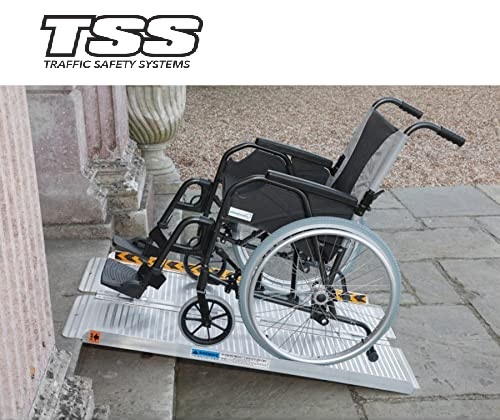When it comes to creating an inclusive home environment, one of the key considerations is ensuring accessibility for everyone. Wheelchair ramps play a crucial role in providing mobility and independence to individuals with disabilities.
Whether you are designing a new home or making modifications to your existing one, selecting the right wheelchair ramp is essential. In this blog post, we will explore various factors to consider when choosing a wheelchair ramp that suits your needs and fits seamlessly into your home.
Types of Wheelchair Ramps
Before delving into the decision-making process, let’s take a moment to understand the different types of ramps available in the market:
- Modular Ramps
Modular wheelchair ramps are versatile and can be customised to fit various entry points and heights. They are typically made from aluminium and are easy to install, making them an excellent choice for temporary or permanent use. These ramps can be configured in different ways to accommodate different space constraints.
- Threshold Ramps
Threshold wheelchair ramps are designed for smooth transitions over small obstacles like door thresholds or uneven surfaces. They are often made from rubber or aluminium and are a perfect solution for homes with limited space.
- Portable Ramps
Portable wheelchair ramps are lightweight and can be easily transported. They are a convenient option for individuals who need mobility assistance when travelling or visiting places that may not have built-in accessibility features.
- Permanent Ramps
Permanent ramps are typically made of wood or concrete and are custom-built to fit the specific dimensions of your home. These ramps provide a durable and long-term accessibility solution but may require professional installation.
 Factors to Consider When Choosing a Wheelchair Ramp
Factors to Consider When Choosing a Wheelchair Ramp
Now that you have a better understanding of the different types of wheelchair ramps let’s dive into the factors to consider when selecting the right one for your home:
- Ramp Length and Slope
The length and slope of the wheelchair ramp are crucial factors to ensure safe and comfortable access. The slope should adhere to ADA guidelines, which recommend a 1:12 slope ratio (for every 1 inch of rise, you need 12 inches of ramp length). Calculate the required ramp length based on the height of the entry point.
- Material and Durability
Consider the weather conditions in your area and the ramp’s exposure to the elements. Aluminium ramps are rust-resistant and low-maintenance, while wooden ramps can be aesthetically pleasing but may require more upkeep. Choose a material that suits your climate and maintenance preferences.
- Safety Features
Safety should be a top priority when selecting a wheelchair ramp. Look for features like non-slip surfaces, handrails, and edge guards to prevent accidents. These safety elements ensure a secure and comfortable passage for wheelchair users.
- Budget and Cost
The cost of a wheelchair ramp can vary significantly depending on the type, material, and features. It’s essential to set a budget and explore options that align with your financial constraints. Keep in mind that investing in a high-quality ramp is an investment in the accessibility and convenience of your home.
- Local Building Codes and Permits
Before installing a wheelchair ramp, check with your local authorities for any building codes and permit requirements. Compliance with these regulations is crucial to ensure the ramp’s legality and safety.
Conclusion
Choosing the right wheelchair ramp is a significant decision when it comes to making your home more inclusive and accessible. Consider the type, length, material, safety features, budget, and local regulations when making your choice.
By carefully evaluating these factors, you can select a wheelchair ramp that not only meets your needs but also enhances the overall accessibility and comfort of your home. Remember, an inclusive home is a welcoming home for everyone.

